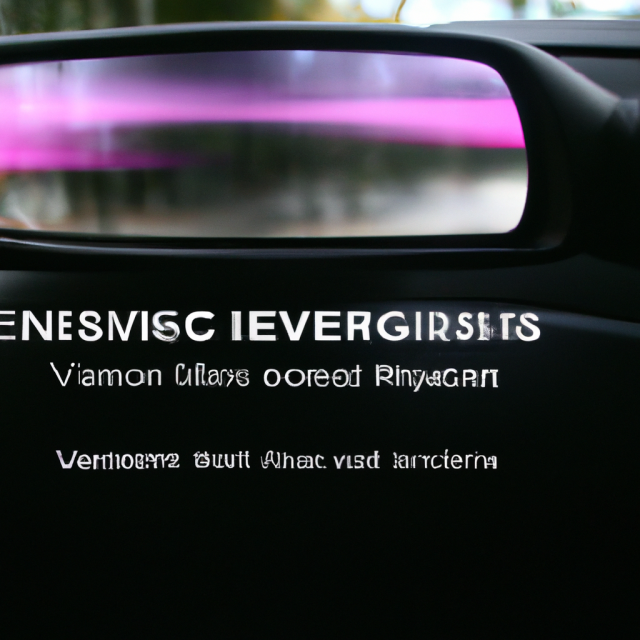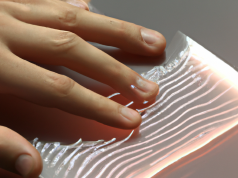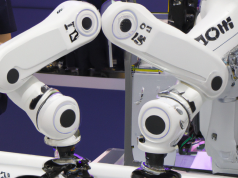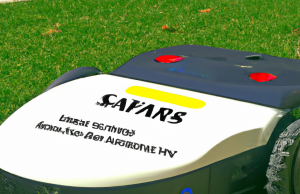The automotive industry is experiencing a gradual rebound from the significant decrease it suffered during the Covid-19 pandemic, and automobile companies are considering introducing new components to help boost sales over the next five years. U.K. startup Envisics, which designs technology featuring holograms that project navigation, safety warnings, and other data on the driver’s windshield (commonly known as head-up display or HUD), recently secured $50 million in funding with the aim of being part of the conversation.
The money will be allocated both for working with established customers of Envisics’ holographic technology such as General Motors, and for creating the next level of the platform. Chief Executive Officer and founder, Dr. Jamieson Christmas said that the new form of the product is much more compact and could be fitted into vehicles of all sizes (including lower-priced ones), and has more robust video options.
He explained that their advanced technology is allowing them to achieve the futuristic vision of Star Wars, where you have the opportunity to experience 3D holograms from within a vehicle.
This new financial support, which is stated to be at least $50 million, is coming from various investors that include Hyundai Mobis, InMotion Ventures (the venture side of Jaguar Land Rover), and Stellantis. Envisics characterizes it as a portion of the Series C. Even with the current market condition, Envisics based in Milton Keynes informed us that it is continuing discussions with more investors to secure more funds.
Today’s announcement of an investment of $50 million has brought the worth of Envisics to half a billion dollars, an increase from the $250 million valuation that had been placed on the company when it raised the same amount in a Series B round in 2020. This funding was supported by Hyundai Mobis, General Motors Ventures, SAIC Motors, and the Van Tuyl Group’s family office – a business dedicated to automotive dealership and associated services. The investors who have already taken part in the company’s funding rounds stay as part-owners, according to Envisics.
Envisics has become a substantial part of the automotive industry, according to a discussion with Christmas. Although there was no indication of who besides Jaguar Land Rover and GM they are partnered with, they mentioned the latter has proven their second generation of displays will be incorporated in Lyriq electric Cadillacs.
Even though the startup is trying, they are still facing obstacles from two sides of the market. There have been a lot of cars running out of energy and being forced to cease operations lately, from major ones like Argo AI to smaller ones like Broadmann17; even ones still in the running could be under more strict checks, like Cruise. Additionally, there isn’t any sizeable enterprise that has been built from the augmented reality tech industry, incorporating the HUD sector.
The condition of the entire economy looms above both industries, influencing not only the amount of automotive sales, but also the willingness of customers to splurge on extras like augmented reality displays when they purchase cars.
Despite the difficulties, there are some encouraging indications as well.
The GM agreement is apparently still on schedule. Last year, Christmas mentioned Envisics’ first merchandise would be produced in 2023 and that was reconfirmed this week. Remarkably, the first head up displays are set to be delivered this year.
The Lyric is the beginning of a line of luxury vehicles; the company has come to agreements with Panasonic Automotive Systems (a branch of Panasonic) which suggests that more models of various prices will be available in the future.
As for what ispresented on these Heads-Up Displays, currently, Christmas said that the primary concern is providing drivers with what is necessary for their safety, such as alerts for vehicle status or navigation, rather than delivering superfluous information, like new albums released on Spotify. For the time being, the intention is to create an experience that is both best and safest for drivers.
Although automakers initially considered that drivers would want screens in their vehicles that were as large and commonplace as the technology they use at home, the implementation of large displays has started to wane due to their potential for distraction and the lack of need for them, as Christmas noted. This applies to Heads-Up Displays (HUDs) and the amount of space that their associated information would occupy on the front window.
Christmas declared that figuring out how much space to allocate for interactive and connected experience for car owners is the most difficult issue for car companies.
He noted the team was putting a lot of effort into approving the technology. The corporation makes mention that even though Augmented Reality (AR) Heads Up Displays (HUD) only represent a very small section of the vehicle manufacturing sector, with 1.6 million units by 2022, it will expand to 19.1 million by the year 2032.
Strategic financiers consider investing in Envisics at this moment to be a great option to secure early access to their technology when they are prepared to implement it.
Younghoon Han, VP and head of electronic control and convenience at Hyundai Mobis, expressed his pleasure to carry on the strategic partnership with Envisics in a statement, mentioning they wished to manufacture advanced AR-HUDs incorporating holographic technology, leading to safer and easier HMI for world automobile manufacturers thanks to the solidarity of both companies.









